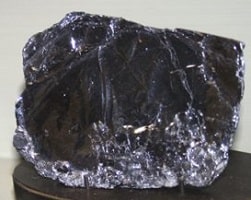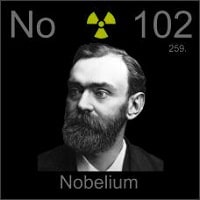We elaborate the uses of Indium and atomic properties with characteristics. Indium is a chemical element with a lustrous silvery grayish appearance with atomic number 49. Its symbol is In and it belongs to the group of metals in the block p and its usual state in nature is solid. Indium is located at position 49 on the periodic table.
You Can Visit Our Managed: Periodic Table Main Page
On this page you can discover the chemical properties of indium and information about indium and other elements of the periodic table such as gallium, thallium, cadmium or tin. You will also learn what the Indian is for and you will know its uses through its properties associated with the Indian such as its atomic number or the usual state in which the Indian can be found.
You will be able to see qualities of indium such as its melting and boiling point, its magnetic properties or what its chemical symbol is. Also, here you will find information about its atomic properties such as the distribution of electrons in indium atoms and other properties.
For some elements, part of this information is unknown. In these cases we show the properties attributed to them.
Indian properties
Indium belongs to the group of metallic elements known as the p-block metals that are located next to the metalloids or semimetals in the periodic table. These types of elements tend to be soft and have low melting points, properties that can also be attributed to indium, since it is part of this group of elements.
The state of the Indian in its natural form is solid. Indium is a lustrous silvery-gray chemical element and belongs to the group of the p-block metals. The atomic number for indium is 49. The chemical symbol for indium is In. The melting point of indium is 429.75 degrees Kelvin or 157.6 degrees Celsius, or degrees Celsius. The boiling point of indium is 2345 degrees Kelvin or 2072.85 degrees Celsius or degrees Celsius.
Atomic Properties of Indium
The atomic mass of an element is determined by the total mass of neutrons and protons that can be found in a single atom belonging to this element. As for the position to find indium within the periodic table of elements, indium is in group 13 and period 5. Indium has an atomic mass of 114.818 u.
The electron configuration of indium is [Kr] 4d10 5s2 5p1. The electronic configuration of the elements determines the way in which the electrons are structured in the atoms of an element. The mean radius of the Indian is 155 pm, its atomic radius or Bohr radius is 156 pm, its covalent radius is 144 pm, and its Van der Waals radius is 193 pm. Indium has a total of 49 electrons whose distribution is as follows: In the first shell it has 2 electrons, in the second it has 8 electrons, in its third shell it has 18 electrons, in the fourth, 18 electrons and in the fifth shell it has 3 electrons.
You Can Visit Our Managed: Periodic Table Main Page
Characteristics of the Indian
Below you can see a table that shows the main characteristics of the Indian.
| Indian | ||
|---|---|---|
| Chemical symbol | In | |
| Atomic number | 49 | |
| Group | 13 | |
| Period | 5 | |
| Appearance | lustrous silver-gray | |
| Block | p | |
| Density | 7310 kg / m3 | |
| Atomic mass | 114,818 u | |
| Medium radius | 155 pm | |
| Atomic radio | 156 | |
| Covalent radius | 144 pm | |
| Van der Waals radio | 193 pm | |
| Electronic configuration | [Kr] 4d10 5s2 5p1 | |
| Electrons per shell | 2, 8, 18, 18, 3 | |
| Oxidation states | 3 | |
| Oxide | amphoteric | |
| Crystal structure | tetragonal | |
| State | solid | |
| Melting point | 429.75 K | |
| Boiling point | 2345K | |
| Heat of fusion | 3,263 kJ / mol | |
| Vapor pressure | 1.42 × 10-17Pa at 429 K | |
| Electronegativity | 1.78 | |
| Specific heat | 233 J / (Kkg) | |
| Electric conductivity | 11.6 × 106S / m | |
| Thermal conductivity | 81.6 W / (K m) | |
You Can Visit Our Managed: Periodic Table Main Page





